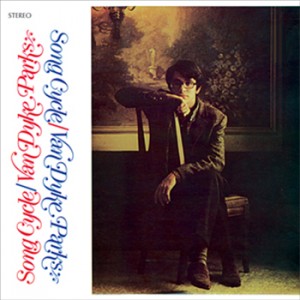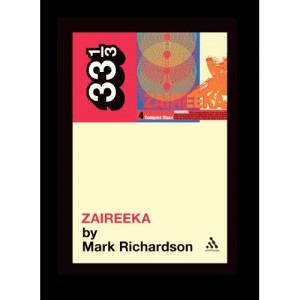 At a time when album sales drop yearly, it almost seems quaint that Continuum Books’ 33 1/3 series continues to pay attention to those artifacts of yesteryear. The series continues to pay off, though, because of the modesty of the concept. One album in a hundred or so pages means the books don’t try for encyclopedic coverage which almost always veers into some variation of soap opera. The books have an idea at their core, and they don’t hang around long enough to wear that idea out.
At a time when album sales drop yearly, it almost seems quaint that Continuum Books’ 33 1/3 series continues to pay attention to those artifacts of yesteryear. The series continues to pay off, though, because of the modesty of the concept. One album in a hundred or so pages means the books don’t try for encyclopedic coverage which almost always veers into some variation of soap opera. The books have an idea at their core, and they don’t hang around long enough to wear that idea out.
Richard Henderson’s Song Cycle looks at Van Dyke Parks’ career-defining album, and if there’s a flaw, it’s that he asks too few questions of the album. Admittedly, I come to Song Cycle as someone who pulls it out once or twice a year and admires the album more than I enjoy it. I wish Henderson explored Parks’ impulse to make seemingly anachronistic music in 1968, but he does provide valuable insight into Warner Brothers at a point when the label seemed to err on the side of the artist by focusing on one who never sold many records. Not only did Parks not suffer at the hands of the label; he became an executive and continued releasing albums, though by the early 1970s, Warner Brothers was less enchanted with him. If nothing else, Henderson’s book illustrates an attitude toward the music business that’s seems almost unimaginable for a major label today.
 Song Cycle is more spoken of than listened to, and the same is true of the Flaming Lips’ Zaireeka – the subject of Mark Richardson’s 33 1/3 book. Zaireeka‘s rarely heard because it’s a four-CD set, and to hear it properly, listeners need four CD decks, each playing the discs simultaneously. Richardson uses the album as a way to talk about the band’s transition from a noisy alternative rock band into the acclaimed psychedelic pop band that it has become. He attributes much to the emergence of Steven Drozd as a musical force inside the band, but he also sees Wayne Coyne’s large-scale, multi-musical source experiments as formative. The Parking Lot Experiment and Boom Box Experiment similarly required pieces of a composition to be played from numerous sound sources at the same time for the composition as a whole to be heard.
Song Cycle is more spoken of than listened to, and the same is true of the Flaming Lips’ Zaireeka – the subject of Mark Richardson’s 33 1/3 book. Zaireeka‘s rarely heard because it’s a four-CD set, and to hear it properly, listeners need four CD decks, each playing the discs simultaneously. Richardson uses the album as a way to talk about the band’s transition from a noisy alternative rock band into the acclaimed psychedelic pop band that it has become. He attributes much to the emergence of Steven Drozd as a musical force inside the band, but he also sees Wayne Coyne’s large-scale, multi-musical source experiments as formative. The Parking Lot Experiment and Boom Box Experiment similarly required pieces of a composition to be played from numerous sound sources at the same time for the composition as a whole to be heard.
As he observes, even if someone can assemble four CD players, the odds are long of getting them all to start in perfect synchronization, so each time it’s played, it will always be slightly different. Richardson details how that plays out in the listening as he examines the appeal of the absurdly impractical.




